-
 Bitcoin
Bitcoin $120100
1.16% -
 Ethereum
Ethereum $4329
2.25% -
 XRP
XRP $3.192
-0.22% -
 Tether USDt
Tether USDt $1.000
-0.01% -
 BNB
BNB $805.2
0.47% -
 Solana
Solana $178.7
-1.85% -
 USDC
USDC $0.9998
0.00% -
 Dogecoin
Dogecoin $0.2305
-1.62% -
 TRON
TRON $0.3445
1.17% -
 Cardano
Cardano $0.7940
-1.28% -
 Hyperliquid
Hyperliquid $44.44
-1.20% -
 Chainlink
Chainlink $21.86
-2.42% -
 Stellar
Stellar $0.4423
-0.15% -
 Sui
Sui $3.728
-3.84% -
 Bitcoin Cash
Bitcoin Cash $584.8
2.19% -
 Hedera
Hedera $0.2524
-2.87% -
 Ethena USDe
Ethena USDe $1.001
-0.02% -
 Avalanche
Avalanche $23.66
-0.78% -
 Litecoin
Litecoin $124.5
0.39% -
 Toncoin
Toncoin $3.399
1.77% -
 UNUS SED LEO
UNUS SED LEO $9.002
-0.44% -
 Shiba Inu
Shiba Inu $0.00001327
-2.10% -
 Uniswap
Uniswap $11.42
2.58% -
 Polkadot
Polkadot $3.957
-2.50% -
 Cronos
Cronos $0.1696
4.50% -
 Dai
Dai $1.000
0.00% -
 Ethena
Ethena $0.8139
3.04% -
 Bitget Token
Bitget Token $4.442
-0.38% -
 Monero
Monero $271.2
2.93% -
 Pepe
Pepe $0.00001168
-2.91%
Does USDC support smart contract functions
USDC's smart contract compatibility depends entirely on the blockchain; while Ethereum-based USDC fully supports smart contracts, functionality varies across other networks like Solana or Algorand, necessitating careful consideration of network specifics and associated fees.
Mar 12, 2025 at 09:55 am
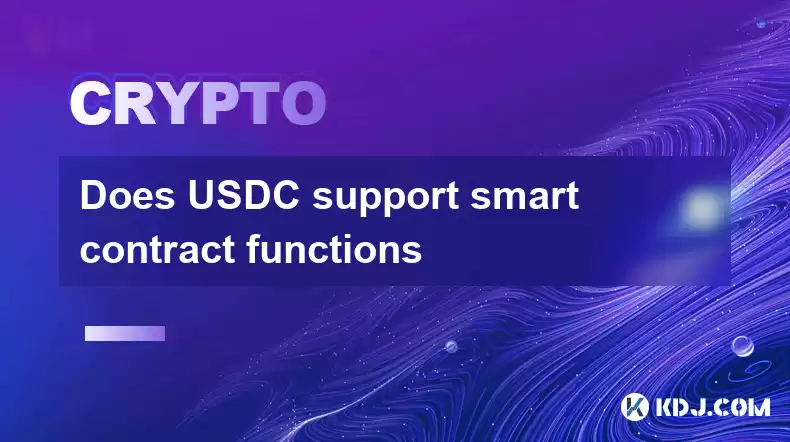
Key Points:
- USDC, unlike some other stablecoins, does not directly support smart contract functionality on all networks.
- Its functionality varies depending on the blockchain it's deployed on.
- Ethereum-based USDC does have smart contract capabilities, while others may not.
- Understanding the specific blockchain is crucial to determine USDC's smart contract compatibility.
- Using USDC in smart contracts requires careful consideration of network fees and transaction speeds.
Does USDC Support Smart Contract Functions? A Detailed Look
The question of whether USDC supports smart contracts is not a simple yes or no. The answer hinges on which blockchain the USDC token is operating on. Circle, the issuer of USDC, deploys its stablecoin across various blockchains, each with its own capabilities. Therefore, the smart contract functionality of USDC is inherently dependent on its underlying blockchain infrastructure.
On the Ethereum blockchain, USDC functions as an ERC-20 token. ERC-20 is a standard for creating tokens on Ethereum, explicitly designed for interaction with smart contracts. This means that USDC on Ethereum is fully compatible with smart contracts and can be integrated into decentralized applications (dApps) and decentralized finance (DeFi) protocols. Developers can seamlessly incorporate USDC into their smart contracts for various purposes, such as payments, collateralization, or building complex DeFi mechanisms.
However, the situation changes when we consider other blockchains. USDC is also available on networks like Solana, Algorand, and Stellar. While USDC on these networks maintains its stable value pegged to the US dollar, its interaction with smart contracts may differ significantly. Some of these networks may offer native token standards analogous to ERC-20, allowing for smart contract integration. Others may have limitations or different mechanisms for interacting with smart contracts.
For example, USDC on Solana might utilize the Solana program language for smart contract interaction. This differs significantly from the Solidity language used on Ethereum. Therefore, the specific methods and considerations for using USDC in smart contracts will vary depending on the chosen blockchain. It's essential to consult the relevant blockchain documentation and the specifics of the USDC implementation on that particular network.
Understanding the nuances of each blockchain is vital. Transaction fees, confirmation times, and the overall ecosystem of developers and tools differ dramatically across these platforms. Choosing the right blockchain for your smart contract deployment involving USDC is a critical decision that impacts the efficiency, cost, and scalability of your project.
The implications of using USDC in smart contracts extend beyond simple token transfers. Consider the potential complexities of using USDC as collateral in decentralized lending protocols. The stability of USDC is a key factor, but the specific smart contract implementation, including the chosen blockchain and the gas fees involved, directly impacts the overall efficiency and cost-effectiveness of such operations.
How to Use USDC in Smart Contracts (Ethereum Example):
Using USDC in Ethereum-based smart contracts involves several steps:
- Obtain USDC: Acquire USDC through exchanges or DeFi platforms.
- Connect Wallet: Link a compatible wallet (like MetaMask) to your preferred development environment.
- Write Smart Contract: Use Solidity to write the contract, incorporating USDC's address and functions.
- Deploy Contract: Deploy the contract to the Ethereum network.
- Interact with Contract: Use your wallet to interact with the deployed smart contract, sending and receiving USDC.
Common Questions:
Q: Can I use USDC in a smart contract on Binance Smart Chain?
A: Yes, USDC is available on Binance Smart Chain (BSC), and it can be used within smart contracts deployed on that network. However, the specific methods and considerations will differ from Ethereum. You'll need to use the appropriate BSC-compatible tools and libraries.
Q: Is USDC's stability guaranteed within a smart contract?
A: While USDC aims for a 1:1 peg to the US dollar, its stability within a smart contract is dependent on the overall market conditions and the functionality of the contract itself. The contract's logic and execution are critical factors.
Q: What are the gas fees associated with using USDC in smart contracts?
A: Gas fees for using USDC in smart contracts vary significantly depending on the blockchain (Ethereum, BSC, etc.), network congestion, and the complexity of the contract's operations. Network congestion can dramatically increase transaction costs.
Q: Are there any security risks involved in using USDC in smart contracts?
A: As with any smart contract, security is paramount. Thorough auditing and testing are crucial to prevent vulnerabilities that could compromise the funds involved. Careful consideration of the contract's logic and the security practices of the platform are essential. Using reputable and well-audited smart contracts is highly recommended.
Disclaimer:info@kdj.com
The information provided is not trading advice. kdj.com does not assume any responsibility for any investments made based on the information provided in this article. Cryptocurrencies are highly volatile and it is highly recommended that you invest with caution after thorough research!
If you believe that the content used on this website infringes your copyright, please contact us immediately (info@kdj.com) and we will delete it promptly.
- Bitcoin, Solana, MAGACOIN FINANCE: Navigating the 2025 Crypto Landscape
- 2025-08-12 00:30:13
- Cardano, ADA Holders, and Layer Brett: A Meme Coin with Real Utility?
- 2025-08-12 00:50:12
- Bitcoin, Michael Saylor, and Savvy Investors: A New Era of Digital Assets
- 2025-08-12 00:30:13
- Crypto Presales in 2025: Spotting the Next Big Thing with Analyst Insights
- 2025-08-12 00:50:12
- Cloud Mining in 2025: Bitcoin, Litecoin, and the Quest for Passive Income
- 2025-08-12 00:55:32
- Token Security, Agentic AI, Cybersecurity Guide: Navigating the New Frontier
- 2025-08-11 23:00:12
Related knowledge
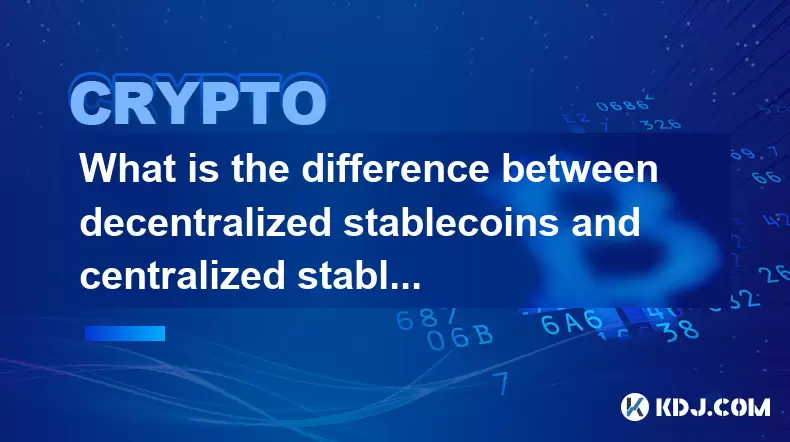
What is the difference between decentralized stablecoins and centralized stablecoins? Pros and cons comparison
Jun 15,2025 at 09:42am
What Are Stablecoins and Why Do They Matter?Stablecoins are a category of cryptocurrencies designed to maintain a stable value, usually pegged to an e...
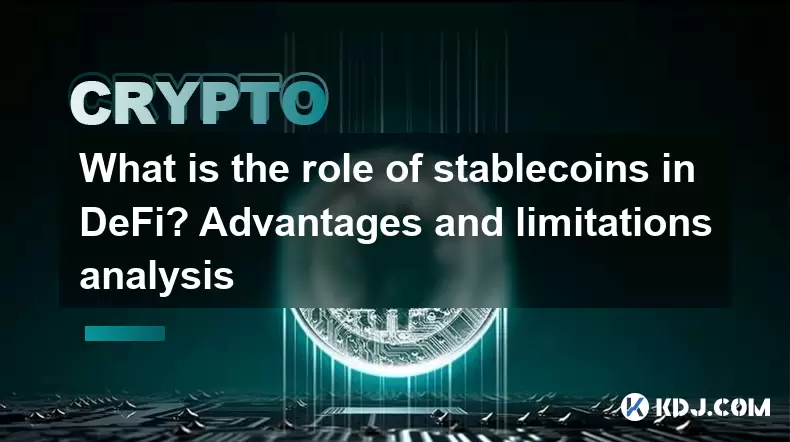
What is the role of stablecoins in DeFi? Advantages and limitations analysis
Jun 14,2025 at 06:28am
Understanding Stablecoins in the DeFi EcosystemStablecoins play a pivotal role in the decentralized finance (DeFi) landscape by providing a bridge bet...

How do algorithmic stablecoins work? Potential risks and market impact
Jun 12,2025 at 02:07pm
Understanding Algorithmic StablecoinsAlgorithmic stablecoins are a type of cryptocurrency designed to maintain a stable value relative to a specific a...
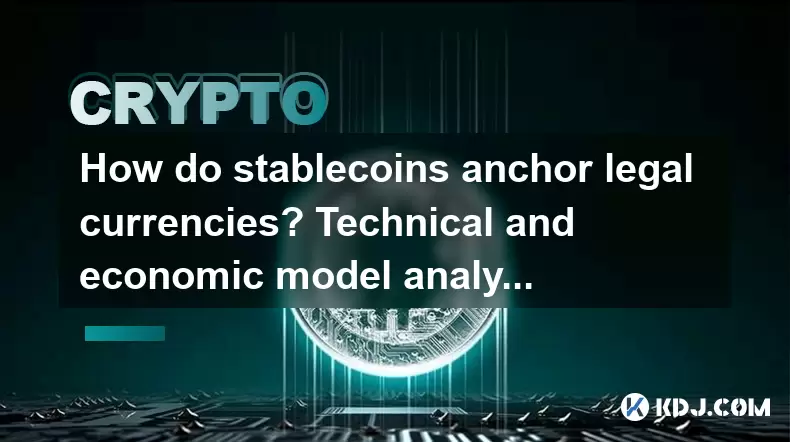
How do stablecoins anchor legal currencies? Technical and economic model analysis
Jun 16,2025 at 08:43am
Understanding the Concept of StablecoinsStablecoins are a category of cryptocurrencies designed to maintain a stable value relative to a specific asse...
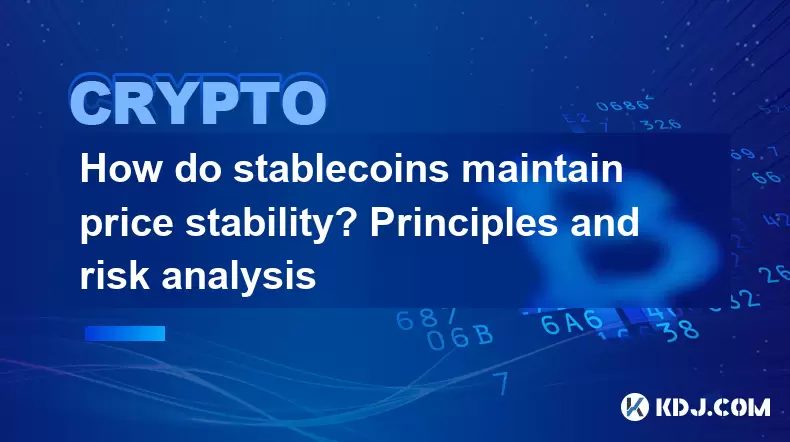
How do stablecoins maintain price stability? Principles and risk analysis
Jun 11,2025 at 12:01am
Understanding the Mechanisms Behind Stablecoin StabilityStablecoins are a category of cryptocurrencies designed to minimize price volatility, often pe...
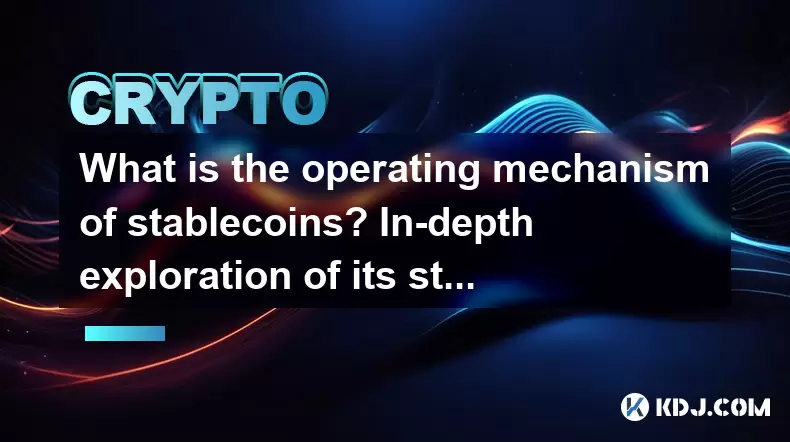
What is the operating mechanism of stablecoins? In-depth exploration of its stability principle
Jun 10,2025 at 09:28pm
Understanding the Core Concept of StablecoinsStablecoins are a unique category within the cryptocurrency market, designed to address one of the most s...

What is the difference between decentralized stablecoins and centralized stablecoins? Pros and cons comparison
Jun 15,2025 at 09:42am
What Are Stablecoins and Why Do They Matter?Stablecoins are a category of cryptocurrencies designed to maintain a stable value, usually pegged to an e...

What is the role of stablecoins in DeFi? Advantages and limitations analysis
Jun 14,2025 at 06:28am
Understanding Stablecoins in the DeFi EcosystemStablecoins play a pivotal role in the decentralized finance (DeFi) landscape by providing a bridge bet...

How do algorithmic stablecoins work? Potential risks and market impact
Jun 12,2025 at 02:07pm
Understanding Algorithmic StablecoinsAlgorithmic stablecoins are a type of cryptocurrency designed to maintain a stable value relative to a specific a...

How do stablecoins anchor legal currencies? Technical and economic model analysis
Jun 16,2025 at 08:43am
Understanding the Concept of StablecoinsStablecoins are a category of cryptocurrencies designed to maintain a stable value relative to a specific asse...

How do stablecoins maintain price stability? Principles and risk analysis
Jun 11,2025 at 12:01am
Understanding the Mechanisms Behind Stablecoin StabilityStablecoins are a category of cryptocurrencies designed to minimize price volatility, often pe...

What is the operating mechanism of stablecoins? In-depth exploration of its stability principle
Jun 10,2025 at 09:28pm
Understanding the Core Concept of StablecoinsStablecoins are a unique category within the cryptocurrency market, designed to address one of the most s...
See all articles

























































































